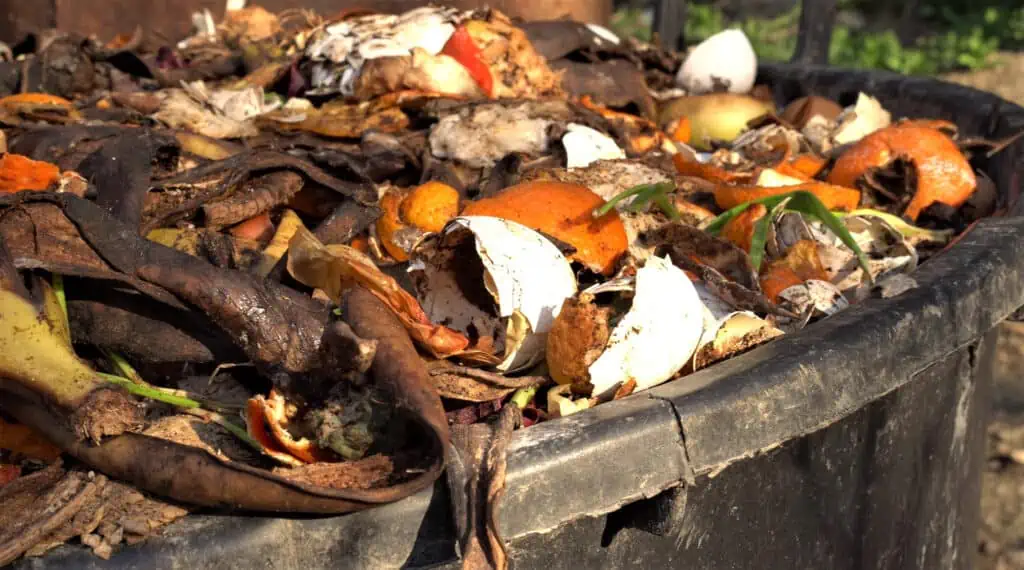As an Amazon Associate I earn from qualifying purchases.
At A Glance
If your compost bin is too wet, it can hinder the composting process and lead to odor issues. To rectify this, add more “brown” materials like dry leaves, straw, or shredded newspaper to absorb excess moisture. Regularly turn the compost to aerate the material and allow moisture to evaporate. Ensure your compost bin has proper drainage to let out excess water, and consider covering the bin during rainy weather to prevent additional water from entering. Balancing the moisture level in your compost bin will promote a healthier composting environment and produce better compost for your garden.
Dealing with a wet compost bin can be a frustrating experience for any gardener. Not only can it slow down the composting process, but it can also lead to unpleasant odors and attract pests. Fortunately, there are several simple solutions to fix a wet compost bin and get it back on track.

One of the most common reasons for a wet compost bin is overwatering. While it’s important to keep your compost moist, adding too much water can cause it to become waterlogged. Another reason could be poor aeration in your compost, which can prevent air from flowing through and drying out excess moisture. Additionally, a poorly ventilated bin or tumbler can also contribute to excess moisture buildup.
Understanding Compost Moisture
Importance of Moisture in Composting
Moisture is one of the four essential ingredients for successful composting. Adequate moisture levels in a compost bin provide a suitable environment for microorganisms to break down organic waste. The ideal moisture content for composting ranges from 40% to 60%. If the compost bin is too dry, the microorganisms will struggle to work, and if it is too wet, they will be starved of oxygen.
Signs of Excess Moisture
Excess moisture in a compost bin can lead to foul odors, slimy compost, and slow decomposition. Signs of excess moisture include a soggy, slimy texture, a foul smell, and water oozing out when you squeeze the compost. Wet compost can also attract pests like flies, rodents, and maggots.
Testing Moisture Levels
You can test the moisture level in your compost bin by performing a squeeze test or a sponge test. For the squeeze test, take a handful of compost and squeeze it tightly. If water drips out, the compost is too wet. If it crumbles, it is too dry. For the sponge test, press a sponge into the compost and then squeeze it. If water drips out, the compost is too wet.
Another option is to use a compost moisture meter. These devices measure the moisture content in the compost and give you an accurate reading of the moisture level.
Factors Affecting Moisture Levels
Several factors can affect the moisture level in a compost bin, including weather conditions, season, and the type of organic waste being composted. During the summer, compost bins tend to dry out faster, while in the winter, they tend to stay wetter. Air circulation and drainage are also crucial factors that impact the moisture level in a compost bin.
Impact of Excess Moisture on Composting
Excess moisture in a compost bin can lead to anaerobic decomposition, which produces foul odors and harmful gases like methane. Anaerobic decomposition also kills beneficial bacteria and fungi that are essential for the composting process. Wet compost can also attract pests like flies, rodents, and maggots.
Understanding Compost Ingredients
Compost ingredients can be classified as either “greens” or “browns.” Greens are nitrogen-rich materials like grass clippings, leaves, and kitchen waste, while browns are carbon-rich materials like sawdust, straw, and pine needles. The optimal ratio of greens to browns is 1:3.
Balancing Moisture with Compost Ingredients
To balance moisture levels in a compost bin, it is essential to balance the greens and browns. If the compost bin is too wet, add more browns like dry leaves, sawdust, or shredded newspaper. If it is too dry, add more greens like grass clippings or kitchen waste.
Compost Bin Types and Their Impact on Moisture
The type of compost bin you use can also impact moisture levels. A compost tumbler with good ventilation will dry out faster than a traditional compost bin. A bin with insufficient drainage or poor aeration will retain excess moisture.
Practical Tips for Fixing a Wet Compost Bin
To fix a wet compost bin, turn the compost regularly to improve aeration and drainage. Cover the compost bin to prevent excess moisture from rain or snow. Add dry materials like dried grass clippings, clean sawdust, peat moss, or shredded newspaper to absorb excess moisture. Lime and compost activators like bonemeal or alfalfa meal can also help balance the moisture level.
Regular Maintenance of Compost Bin
Regular maintenance of a compost bin is essential to prevent excess moisture. Turn the compost regularly to improve aeration and drainage. Use a pitchfork or shovel to mix the compost and add air. Remove any waterlogged or slimy compost and add it to a new compost pile.
Common Composting Problems and Solutions
Wet compost, soggy compost, and waterlogged compost are common composting problems. To solve these issues, improve drainage and aeration, balance moisture levels with greens and browns, and turn the compost regularly. Adding lime or compost activators like bonemeal or alfalfa meal can also help balance the moisture level.
